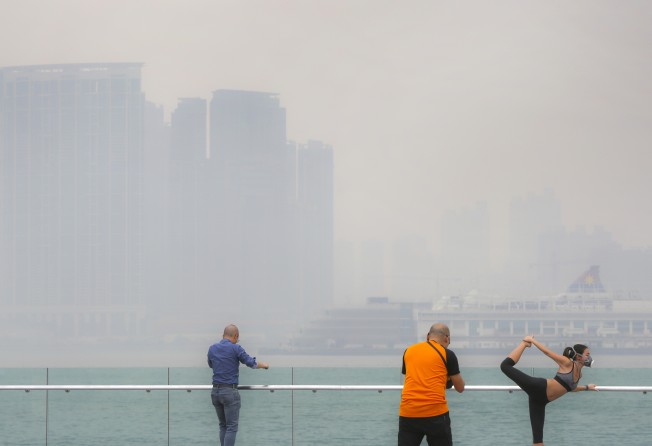There is still work to be done to clean up our city’s air
The government has a chance to redouble efforts to upgrade local truck and bus fleets and develop a strategy to cut the growth in the number of cars

Outgoing chief executive Leung Chun-ying listed the environment as one of his prioritieswhen campaigning for office. That was five years ago. Were he to have sought a second term in office, would he have been able to campaign on his government’s record in fighting air pollution? It is a mixed scorecard. Undersecretary for the environment, Christine Loh, says a report assessing performance under the 2013 Clean Air Plan, due out in a few weeks, will show there has been “significant progress” towards hitting international targets. But that is when measured against a bar that has been set fairly low.
Annual average roadside levels of PM10 – respirable particles smaller than 10 microns – dropped from around 53 micrograms per cubic metre in 2012 to less than 40mcg last year. The report projects a further fall to 30mcg by 2020. Projections for the fall in the more insidious hazard of PM2.5 will not be known until the report is out.
Roadside levels of nitrogen dioxide (NO2) fell from 120mcg to 80mcg and are forecast to drop to 65mcg by 2020, against the WHO’s standard of 40mcg. In terms of “bad air” days and reduction of pollutants, there has been significant impact on air quality, according to Loh. Most progress was made in lowering shipping emissions of sulphur dioxide (SO2), thanks to legislation requiring ships to switch to low-sulphur fuel on berthing. A new emissions control area for Pearl River Delta waters to be set up by the mainland in 2019, requiring all ships to burn low-sulphur fuel in regional waters, is expected to slash SO2 levels to one third of those in 2012.
However, most pollutant levels are still far above the WHO’s ultimate targets, with roadside and ambient pollution hovering at unsafe levels and smog-inducing ozone still a major regional headache. The HK$11.7 billion scheme to subsidise the phasing out of old diesel-burning commercial vehicles has helped improve roadside air. The government is conducting a five-year review of the city’s air quality objectives. It is a chance to redouble its efforts to upgrade heavy-polluting local truck and bus fleets, and developing a strategy for curbing the growth in the number of cars, which has worsened pollution, and for providing incentives to use clean energy.